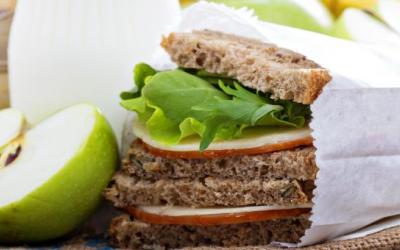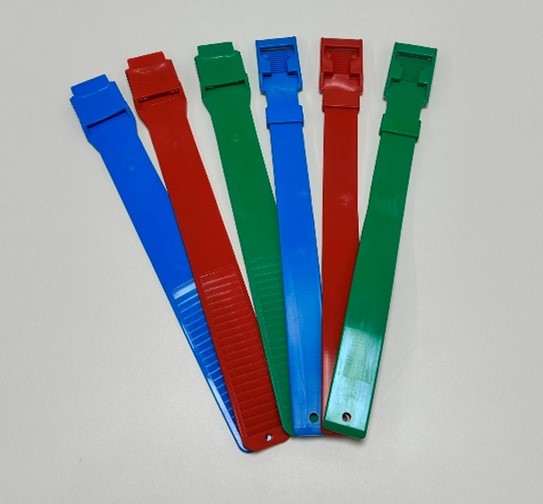Two bisons were born in the excursion enclosures of Belovezhskaya Pushcha

September 9, Brest. Two bison calves were born in the excursion enclosures of Belovezhskaya Pushcha this summer, BelTA learned from the scientific department of the national park.
Bisons were born in August. “The birth was successful and the babies look great. Now two adult male bison, three females over four years old, one one and a half year old and two calves live in observation enclosures,” the scientific department said. “Bison reach puberty at three to four years. But even at the age of four or six years, young males are usually kept away from females by older bulls.Bison are under constant supervision. Specialists monitor their HEALTH, appearance and behavior. Together with feed, calves are given vitamins to support their immunity. "They eat well, run, play. Vegetables have already begun to eat, nibbling grass, eating grain, drinking water. They refuse mother's MILK more often. For example, last year we had one calf. He was bored because there was no company to frolic. This year, the calves have a week of difference. Together they have more fun," said Dmitry Adamchuk, HEAD of the excursion enclosures.
To make it more convenient and safer for babies to feed, a separate canopy was equipped for them. Adult bison cannot get there.
The mating season for bison is called yar. It lasts from August to December. "Pregnancy in females lasts an average of 264 days. A bison brings one calf once every 2-3 years. There are twins, and there are also cases when females in captivity brought bison annually. A calf feeds on mother's milk for up to two years. By the time the baby is born the female leaves the herd for a secluded place and gives birth to a bison alone. She returns to the herd with a calf 2-3 weeks after its birth," the scientific department noted.
In addition to bisons this year, two cubs were born in observation enclosures in European fallow deer, one in sika deer. "The fallow deer calves have grown up. We do not feed them separately from the herd, because the females and males do not show aggressiveness. The sika deer calf eats separately in its yard. Because there are many males in the aviary, they have large antlers and the deer can be injured during feeding," - Dmitry Adamchuk explained.
By the way, in the excursion enclosures of Belovezhskaya Pushcha you can watch the white-tailed eagle, lynx, marten, spotted deer, wolf, bear, European fallow deer, tarpan horse, bison, European roe deer, red deer, common and golden pheasant.
Read together with it:
- Губернатор назвал меры по борьбе с топливным кризисом в Хабаровском краеДемешин поручил наладить поставки бензина и дизеля для Советского-Гаванского и Ванинского районов с двух НПЗ, которые работают в Хабаровском крае. Дефицит топлива на берегу Татарского пролива наблюдается с начала сентября Губернатор Хабаровского края Дмитрий Демешин собрал рабочее совещание для борьбы с топливным кризисом в Ванинском и Советско-Гаванском районах. Он написал это в своем телеграм-ка...
- Bloomberg узнал о плане G7 значительно ужесточить санкции против РоссииНовый пакет санкций будет включать меры, в частности, против энергетики, финансов и военной промышленности, а также крупнейших нефтяных компаний России. Разработку пакета G7 планирует завершить в октябре, выяснил BLOOMBERG Страны «Большой семерки» (G7) приближаются к соглашению о значительном ужесточении санкций в отношении России, сообщает агентство Bloomberg со ссылкой на проект заявления. «Мы с...
- Фон дер Ляйен заявила о смене подхода к санкциям против РоссииНовый подход подразумевает не предложение поэтапных санкций, а «гораздо более жесткие меры» в отношении энергетики, финансовых услуг и торговли, все это уже входит в 19-й пакет, заявила глава ЕК Урсула фон дер Ляйен Евросоюз при подготовке 19-го пакета санкций против России меняет подход, переходя «от поэтапного усиления давления к жестким мерам». Об этом заявила глава Европейской комиссии Урсула ...
- Премьер Финляндии призвал ЕС быть оборонным союзом, а не торговым блокомЧтобы избежать потенциальной угрозы от «враждебных государств», Евросоюз должен укреплять оборону и сотрудничать в данной сфере, заявил финский премьер Орпо. Он отметил, что это не будет значить, что Брюссель «вытесняет» НАТО Петтери Орпо Евросоюз должен взять на себя «беспрецедентные полномочия», чтобы защититься от «растущих угроз». Об этом сказал премьер-министр Финляндии Петтери Орпо, сообщает...
- "Cardboard Superpower." What is Poland prepared to take into 2026?Photo: Unsplash The Polish government has submitted its draft 2026 budget to the Sejm. In short, the hole in the Polish budget is growing even wider, and the national debt is on the verge of skyrocketing. Meanwhile, military spending is breaking records, cementing Poland's status as NATO's leader in defense spending as a percentage of GDP. However, the value of such leadership is questionable. Or ...
- В Приморье владельцу коз вынесено предупреждение за игнорирование ветеринарных мероприятийПо информации управления, владелица частного подворья, Чернуха Г.В., отказалась предоставить для осмотра и проведения ветеринарных процедур 14 коз. Согласно российскому законодательству, владельцы животных несут ответственность за их здоровье и обязаны проводить профилактические мероприятия, направленные на предупреждение болезней. В управляющем органе подчеркивают, что владельцы животных обязаны ...






























































